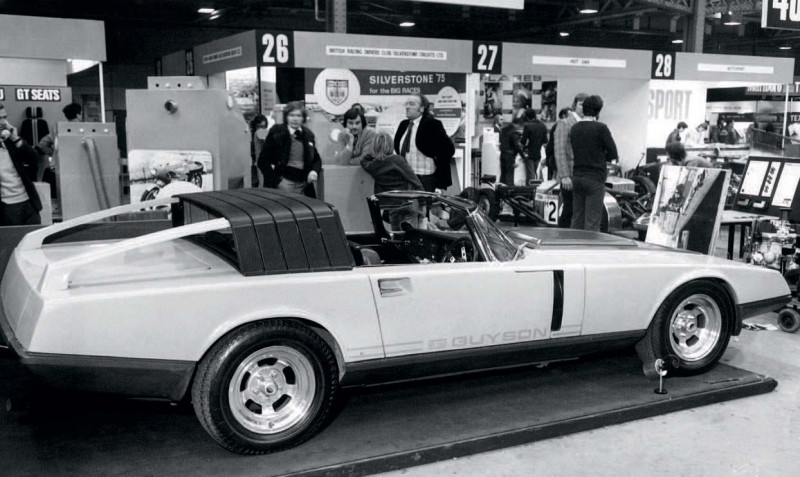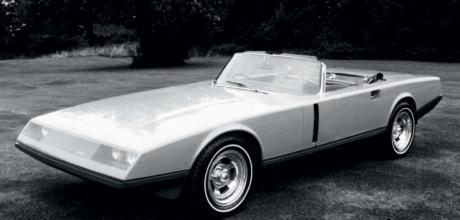1974 Guyson E12
It was a car that was literally and figuratively created by accident. Guyson International MD, Jim Thompson, was a keen hillclimb racer. However, for all his apparent skill behind the wheel, even he couldn’t stop his V12 Jaguar E-type from connecting with something immovable one dark and stormy night in 1973. It was at this juncture that, rather than repairing the car to its original factory configuration, he commissioned Williams Towns to transform it into something that bit more… bespoke. It transpired that Towns had mapped out ideas for an E-type-based conversion already, and now he had a patron to realise his vision.
On the fringe Guyson E12
The Guyson E12 broke cover a year later and caused a furore. For starters, the E12 did away with the donor car’s signature curves, the new glassfibre panel-work being largely grafted onto existing sheet metal, although the steel bonnet and boot sections were replaced with large composite mouldings. Corresponding with journalist Peter Filby in 1987, Towns wrote: ‘On a V12 E-type, the top of the doorline is, in fact, a straight line rising to the rear, not visually related to the waistline, and it is this doorline which, in effect, we projected front and rear to give us the rising wedge-line.’ Towns had hoped that his paymaster would stump up for a bespoke windscreen. However, the cost of tooling up for one proved prohibitive so the wraparound E-type original was retained.

The Midlander also designed a new dashboard, but this was similarly axed on cost grounds. The use of glassfibre saved some weight relative to the donor car, too, the E12 tipping the scales at 1460.5kg compared to the standard Jaguar’s 1533kg. According to Towns, the major benefit was the change of weight transfer towards the rear. In the same letter to Filby, he claimed: ‘…it eased the burden of the V12 up front and produced much better handling. This was helped by the factthat we used [Wolfrace] wheels with an offset to give 3.5in more track, bringing the outside of the tyre to the outside of the body width.’ Sometime later, Thompson engaged Kenilworth Racing Services to modify the twin-cam V12 classic, changes including the addition of six twin-choke 40 IDF Webers. And while Thompson has initially conceived the car as a one-off, replicas subsequently became available for public consumption. An E12 could have been yours for £2277 including VAT, not forgetting the donor E-type. According to Autocar, an over-bored 6.0-litre engine was also available.
A second Guyson was constructed shortly thereafter, this time for Towns’ personal use, which was based on a standard E-type S3 with automatic transmission. There were several detail differences between it and the Thompson car, not least the use of four rectangular Alpine-Renault headlights rather than a Perspex-shrouded quartet of circular lamps. Here, the indicators were recessed rather than pronounced as on its sibling. It also featured a proper number plate plinth below the bumper. The Interstyl principal also mapped out a variant with a Targa-style roof and rear buttresses, and a mockedup version was displayed at the 1975 Speedshow at Olympia, Towns using his own car as a basis. The high price and polarising styling no doubt blunted its chances. No E12s were ever sold to the public. Just to heap on the ignominy, Towns’ car was later reconfigured back to an E-type-shaped E-type.
“The Interstyl principal also mapped out a variant with a Targastyle roof and rear buttresses, and a mocked-up version was displayed at the 1975 Speedshow at Olympia, Towns using his own car as a basis.”


